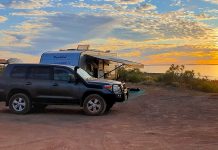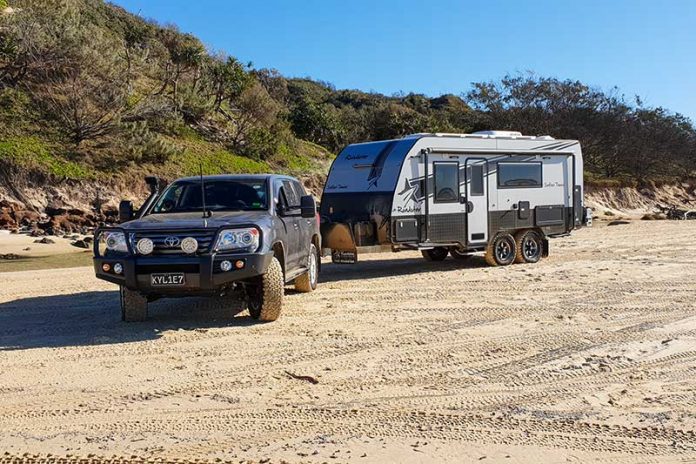
If you’re in the market for a new or pre-loved caravan, it’s easy to be overwhelmed by the sheer variety of shapes and sizes available when deciding what suits you and your needs. However, there is something else you may want to consider when making your choice: the number of axles your caravan will have.
This number may affect how you use the caravan and how easy it will be to live with long term. In order to help you make sense of all this, we visited the Roadstar Caravans factory in Campbellfield, Vic, for advice on why you might want one, two or more axles on your caravan.
WHAT TYPES OF AXLES ARE THERE?
Before we get too far into the subject, it is worth looking at the types of axles that are available. Essentially, there are two basic types: solid axles and independent suspensions.
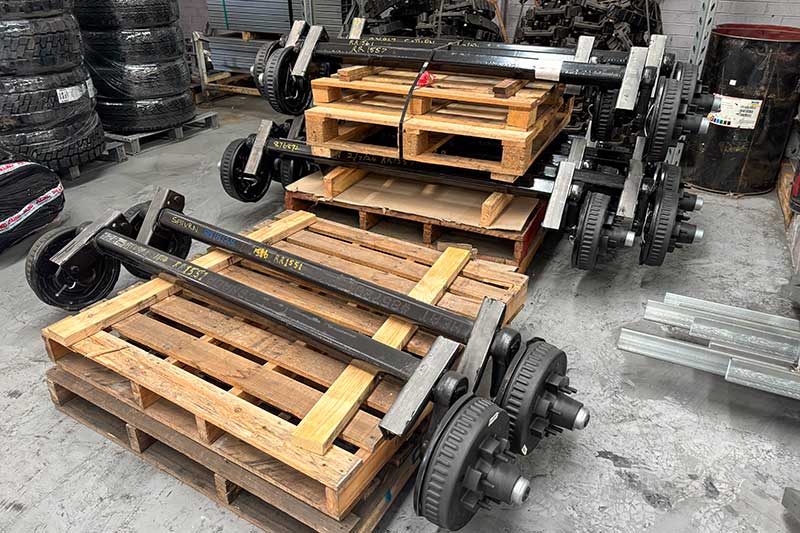
Solid axles are the more traditional type of axles used on most trailers. They feature a physical connection between the two opposing wheels. They are generally basic, cheap to manufacture and traditionally used for carrying heavy loads. Having a connection between opposing wheels means that what happens to one wheel will have a direct effect on the other.
For example, if one wheel drops into a ditch, the opposing wheel will also move. Similarly, if one wheel hits a severe bump, the forces will be transmitted to the opposing wheel. This can have an adverse effect on how the trailer handles.
Independent suspensions do not have this connection between opposing wheels; therefore, what happens to one wheel will have little effect on the others. This greatly improves handling, particularly in rough conditions; however, in order to support heavy loads, the suspension has to be strong and requires dampening in the form of shock absorbers. This makes them more complicated and more expensive than solid-axle arrangements.
WHAT IS LOAD-SHARING?
Load-sharing is where the load of any vehicle is distributed across its wheels. The more wheels/axles, the heavier the trailer can be as there are more wheels to support the weight.
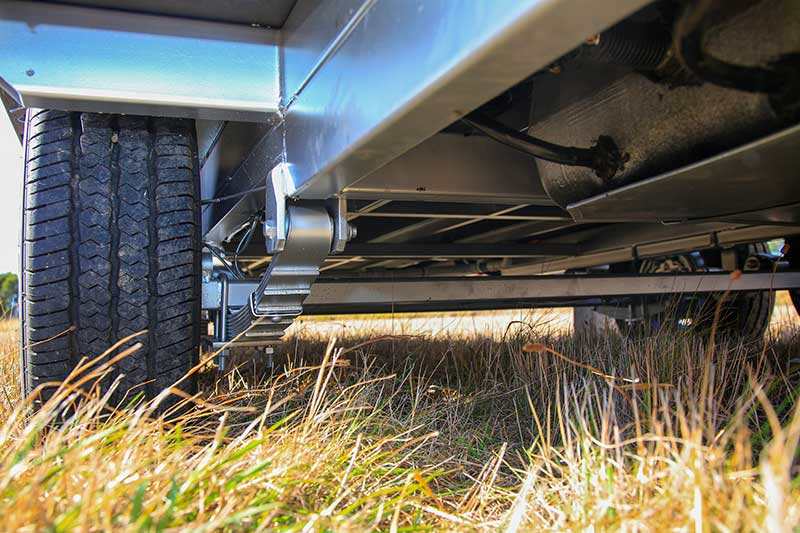
As a rule, this weight is not evenly distributed and this distribution will change as the trailer moves, particularly when pitching front to back. This is not an issue with single-axle configurations but, in the case of a dual-axle trailer, if the axles are close together, the difference in weight can change quite dramatically. This is why the Australian Design Rules for light trailers under 4500kg state:
All axles in a group must be interconnected by load-sharing suspension, except for the following configurations:
• Where the two axles in a group have their centres not more than 1,000mm apart
• Where the three axles in a group have their centres not more than 2,000mm apart
• Where the four (or more) axles have their centres not more than 3,200mm apart.
When it comes to choosing an axle configuration, you shouldn’t don’t need to worry about this as the manufacturer will be aware of these requirements and build the caravan accordingly.
WHAT DETERMINES AXLE NUMBERS?
Weight: Without question, this is the number one consideration for determining how many axles a caravan will have. The more axles, the more wheels will be in contact with the road, distributing the weight across more points. Further, individual wheels and tyres will have a limit on how much weight they can support.
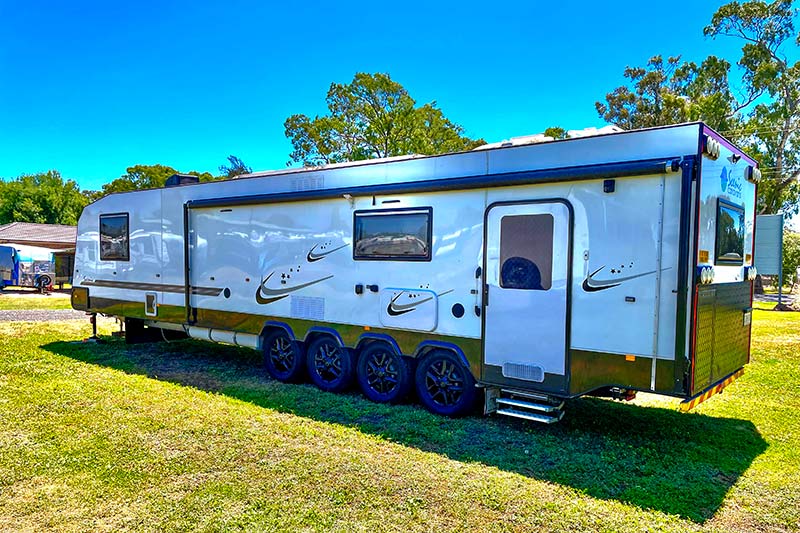
Imagine a single-axle trailer with tyres rated to 425kg. This means the maximum weight the trailer can be will be limited to 850kg. A dual-axle trailer fitted with the same tyres can, theoretically, carry twice that load.
So if weight is important to you, or you’re looking for a long caravan and believe you will need to carry heavier loads, then a trailer with dual axles may be more suitable.
Length: Caravans are essentially big boxes on wheels. The sides are large and flat, acting much like sails in the wind. The longer the caravan, the further away from the wheels the ends will be and the greater the effect of a side wind, especially at the front and rear of the van. This might cause instability that might turn into an uncontrollable wobble. But having more than one axle will create a larger area of contact with the road, providing greater resistance to the effects of sideways movement.
Stability: As a trailer gets longer and taller, the forces creating pitching (front-to-back movement), rolling (rocking side-to-side) and swaying have a greater effect, causing the trailer to be more unstable. Adding additional axles can counteract and control these forces.
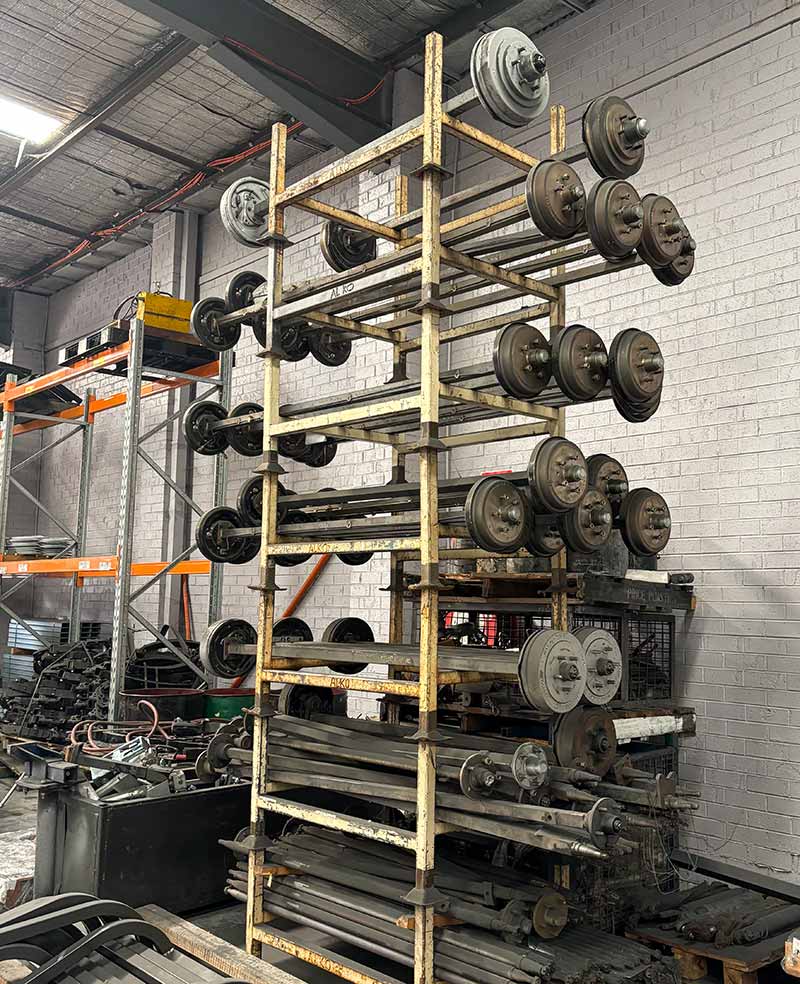
When you combine all these factors together, it stands to reason that the longer a caravan is, the more axles it will need.
When it comes to Australian-manufactured caravans, most up to 18ft long are single-axle, 18 to 25ft are dual-axle, and any over 25ft will have three and, in some cases, up to four axles. Of course, there are exceptions to this. If the caravan is designed to be used only on sealed roads, you may see a higher length-per-axle ratio. Also, many caravans manufactured in Europe or the USA may also have more length with fewer axles as the conditions of their road networks are generally better than here in Australia. They also tend to be lighter in construction.
WHAT ABOUT OFFROAD ABILITY?
At this point, you may have the impression that the more axles a caravan has, the better. But this is not necessarily the case, especially when you consider towing your caravan in offroad conditions.
Now, before I go much further, it is important to understand that the term ‘offroad’ can mean different things to different people. As a rule, we can take it to mean any conditions other than highways and sealed roads. From there, offroad can vary from a straight, well-graded dirt road up to a meandering hilly track requiring a 4WD vehicle to traverse.
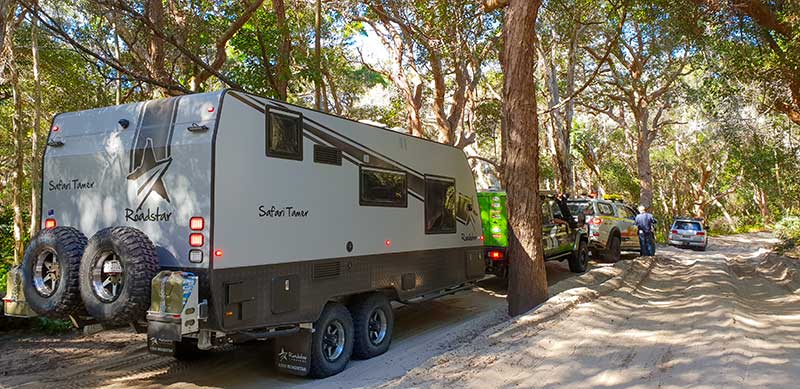
When caravanners say they want to go offroad, they generally mean they want to have the ability to traverse some of Australia’s iconic dirt roads. These include the Oodnadatta Track, the Great Central Road and the Cape York Development Road. Most of these roads can be traversed by vans with more than one axle as long as the suspension is up to the task.
That said, we all know conditions of these outback roads can deteriorate quite significantly. Corrugations, exposed rock and severe gibber can make for a very rough ride. There is a school of thought that says with a single-axle van, you only hit the corrugations once, but having dual axles spreads the load over a larger contact area, lessening the impact on each wheel.
In my opinion, the quality of the suspension, the strength of the van’s construction, appropriate tyre pressures and driving to the conditions are more important considerations than the number of axles.
As offroad conditions worsen, the more obstacles a driver will likely face, all with varying degrees of difficulty. For a caravan to traverse these conditions, it will need larger approach and departure angles, high ground clearance and greater manoeuvrability. This is when a smaller, single-axle van will have an advantage.
THE CHALLENGE OF REVERSING
At the end of the day, all these factors may mean very little when it comes to deciding on the number of axles on your caravan. You see, the ease with which you can reverse your caravan into a site reduces dramatically when you have more axles and a longer van.
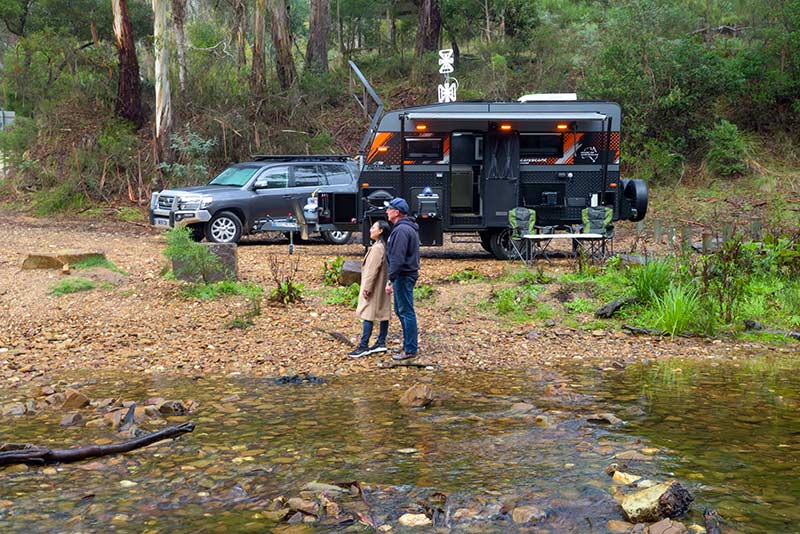
I’ve owned three caravans over the years: one single-axle van and two with dual axles, and I can tell you the difference is dramatic.
It is an inescapable fact that single-axle caravans are very easy to reverse and manoeuvre into small, tight spaces. Multi-axle vans cannot turn as sharply as single-axle vans, which means you will need more room to manoeuvre both the van and the tow vehicle. This can restrict your options for caravan parks and other sites.
Then there’s the issue of what is called ‘tyre tensioning’. As you reverse your trailer around a corner, tension builds up as the tyre resists the turning motion. Remember, these wheels don’t steer, so they are forced to a certain degree to deviate off their natural course. The problem is that the tension builds in opposite directions between the left and right wheels. So when you park the van and unhitch it from the car, the tension is released, sometimes quite dramatically, swinging the A-frame around and potentially lurching the van forward. You can imagine how dangerous this can be.
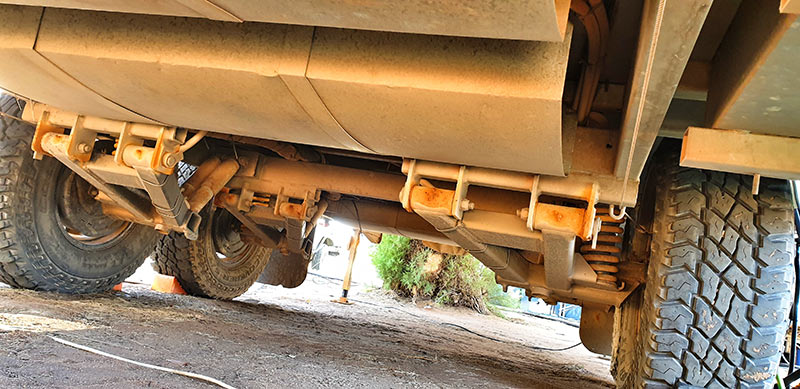
Single-axle vans are not necessarily prone to this phenomenon but it does affect multi-axle vans and, the more axles, the stronger this force is. You can tell if there is a build-up of this force as the wheels will look as though they have been tilted.
Fortunately, it is easy to counter this effect by simply driving your van forward a couple of metres and reversing straight back into place. Regardless, you should still unhitch with a modicum of caution.
SUMMING UP
Hopefully, this has given you some food for thought when it comes to deciding how many axles you want or need for your next caravan purchase. While the information here will prove helpful, there’s nothing like getting feedback from actual caravan owners. We encourage you to talk to owners of multi-axle vans and get them to share their experiences with you.
GoRV would like to thank the management and staff of Roadstar Caravans for allowing me to snoop around their factory, take some pictures and gain some valuable information.



